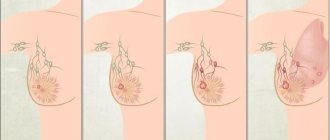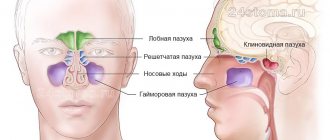Keratoma is a benign formation on the skin that appears due to a local accumulation of horny cells of the epidermis. Outwardly, such manifestations resemble convex pigment spots with hard scales on the surface. And they are often located on the face, forearms, upper back, and arms.
Single or multiple keratomas are typical for mature people over 40 years of age. This skin pathology is rarely encountered in children and young people. They appear equally in men and women. Cases of self-healing have been recorded when formations of this type disappeared by themselves. But often raised dark spots reappear in the same areas of the skin.
Are keratomas dangerous? Do they need to be treated or not? How to get rid of keratomas at home? The specialists of the Medical Center for the Diagnostics of Moles “Lazersvit” have the answers to all these questions.
Keratomas: causes of appearance?
Keratoma, according to dermatologists, develops for one of two reasons - excessive ultraviolet radiation and the physiological processes of aging of the skin. The predisposition to the development of pathology, according to medical experts and geneticists, is inherited. But there are no clear reasons for the appearance of a formation, such as, for example, in condyloma, which is caused by the human papillomavirus. At one point, an accumulation of cells is observed, which leads to an anomaly.
Skin keratoma, as a rule, does not pose a threat to health. But dermatologists strongly recommend observing the spots. After all, individual formations have a tendency to reproduce and grow. And in rare cases, they degenerate into malignant neoplasms.
Laser removal of keratoma
The most common, delicate, low-cost and aesthetic option for eliminating keratoma is laser removal (our clinic uses a fractional CO2 laser).
We also use radio wave, electrocoagulation and surgical methods for removing skin keratoma, and use a combination of laser and radio wave elimination methods. The procedure for removing keratoma should be quick, painless, and least expensive, so that the patient receives the maximum aesthetic effect with a minimum recovery period. Both the laser or radio wave method and their combination completely solve these issues.
Laser removal of keratomas is performed on an outpatient basis, immediately after examination and digital dermatoscopy and has many advantages:
- Speed. Removal occurs not even in a matter of minutes, but literally in seconds;
- Painless. We use local anesthesia, and for small forms of keratomas, an application method of pain relief is possible;
- Complete sterility;
- Ease of wound care;
- Fast healing. For small keratomas it is 4-5 days, and for large ones - 2-3 weeks.
Why should a keratoma be observed?
The skin disease keratoma is considered by oncologists to be a borderline formation, especially in patients with an increased risk of cancer. The probability of malignancy into melanoma or basal cell carcinoma varies in different age groups in the range of 8-35%. For this reason, people who have one or more formations of this type are recommended to see a dermatologist. Regular visits to the doctor allow you to notice signs of degeneration in the early stages and begin treatment in a timely manner. Well, it’s better to remove the protruding spot in order to prevent even the minimal likelihood of pathological processes.
The risk of cancer is not the only reason to see a doctor. Keratoma on the face is perceived as a cosmetic defect, attracts the attention of others, and becomes the cause of complexes. A convex formation on the body can be injured by tight clothing or accessories. In this case, there is a threat of secondary infection.
Age-related keratoma “loves” to grow on the scalp. The formation is often damaged by a comb and hairdresser's accessories during cutting and styling.
Each case of keratoma requires an individual approach. And only a qualified doctor can give recommendations to the patient - treat or remove, ignore or observe.
How dangerous is a keratoma?
For the most part, keratomas do not pose an oncological risk.
As mentioned above, keratoma keratoma and solar keratoma have an increased risk of malignancy. But what else is the danger of these skin formations? The fact is that even an experienced doctor is not always able to distinguish a keratoma from a malignant neoplasm using clinical methods.
Many malignant tumors at various stages of their development are similar to keratomas. Therefore, in all cases it is necessary to contact a dermatologist-oncologist; only a specialist can correctly diagnose and determine treatment tactics.
Also, keratomas can be dangerous due to complicated course. In the early stages of development, they cause only aesthetic inconvenience (which is important for women or when multiple keratomas are located in open areas of the body). But after the appearance and intensification of keratinization on the surface of the formations, additional complaints may occur - itching, pain, tingling in the area of the keratoma, with deep cracks and injury - the addition of an infection and the occurrence of inflammation, suppuration, with trauma and part of the crusts coming off the surface - severe bleeding.
To summarize: treatment of keratoma is necessary if malignant degeneration is suspected, with a complicated course, with rapid growth, as well as with aesthetic problems.
Classification
Keratomas are classified as follows:
- Seborrheic keratoma appears most often on the chest, back and scalp. Initially, this is a yellow-brown spot, the diameter of which can reach 3 cm. Over time, the surface of the formation becomes dense, and scales appear on it. The color changes to dark brown or black. Externally, this skin pathology looks like dried raisins stuck in the skin.
- Senile keratoma affects the skin of people over 35 years of age. A spot with a diameter of up to 2.5 centimeters appears on the skin. Over time, it thickens, becomes crusty, cracks, and changes color from yellow to black. The growth grows slowly, but over time it can protrude above the skin by a centimeter or even more. Senile keratoma, as this type of neoplasm is also called, is often localized on the shoulders, head, and back. Less common on the face and neck. Senile keratomas can grow in colonies. They also often become inflamed due to physical damage.
- Horny keratoma, which dermatologists often call “cutaneous horn,” has an increased risk of degeneration. First, a gray or brown spot appears on the skin, which eventually becomes covered with scales. A convex tubercle with a rough surface is suitable for placement of the arms, chest, and back. But other parts of the body are no exception. Sometimes patients are diagnosed with multiple horny keratomas.
- Follicular keratoma appears on the cheeks, lips, nose, eyelids. The skin first turns pink, then small tubercles grow at the site where the spot appears.
- Angiokeratoma is a nodular formation of red, black or blue color. Its size can reach 10 centimeters, but most often the growth grows to 2-3 centimeters. Often such skin pathologies form on the back, abdomen, legs and genitals.
- At the first stage, solar keratoma looks like a flat mole. Gradually it begins to peel off. Scales form on its surface. Dense lesions are often found in men over 40 years of age. Location: back, face, feet. Education is rarely singular. As a rule, this is a whole colony of growths. In some cases, degeneration into squamous cell carcinoma is diagnosed.
The type of keratoma and its risks for the patient are diagnosed by a dermatologist after examining the formation.
Our recommendations for gentle skin care:
- Do not expose your skin to friction or pressure.
- Avoid contact with chemicals, including household chemicals, on your skin.
- Be careful when working in the country - juices and pollen of harmful poisonous plants should not come into contact with the keratoma.
- Senile keratoma should not be exposed to ultraviolet irradiation. Apply sunscreen, wear wide-brimmed hats, closed clothing made of lightweight fabrics, in short, choose the protection methods that suit you.
- Try to eat as little junk food as possible that contains carcinogens and other harmful substances. Give preference to plant foods, reduce your consumption of meat (especially red).
And finally, we note once again - if you have a keratoma, do not self-medicate, but consult a doctor.
But following the general principles of proper nutrition, trying not to injure the tumor, not exposing it to sunlight and following other methods of preventing its growth is not only possible, but also necessary. We are always there and ready to help. Book a consultation with an oncodermatologist right now by calling the clinic: +7 (812) 952-83-73, and you will be able to undergo a thorough diagnosis and remove skin keratomas in 1 visit.
Diagnostics
An appointment with a dermatologist begins with taking an anamnesis. The doctor clarifies how long ago the formation was, asks the patient about sensations - painful manifestations, itching, and studies the symptoms. Next, the skin is examined to determine the size and location of the keratoma. The instrumental method - dermatoscopy - allows you to clarify the diagnosis and exclude other skin diseases.
A special device allows you to identify the formation, examine the structure of its tissues, and the depth of its occurrence. The dermatoscope magnifies the image many times, so errors are excluded. And if there is a risk of the keratoma degenerating into a tumor, the doctor will determine this. In some cases, histology is recommended - the formation is sent to the laboratory to determine the cellular composition.
Methods for treating keratosis
There are few methods to remove keratosis.
Among them are the following methods:
- surgical;
- laser;
- medicinal;
- irradiation;
- cryotherapy (cold treatment).
In advanced cases, laser or surgical removal of the keratoma is often chosen. In the initial stages, the disease can be cured with medication. Sometimes folk remedies are used, and in some cases they are more effective than drugs.
Drug treatment
This type of treatment includes laser removal, introduction of antibiotics into the body, application of medicinal ointments to the affected areas of the skin, excision of the tumor under anesthesia.
Seborrheic type is treated with cryosurgery (freezing with liquid nitrogen), laser removal, and application of fluorouracil (antitumor) ointment. Senile - laser, electrocoagulation (burning), surgery, freezing.
Solar - using liquid nitrogen, laser, ointments. Follicular - by burning, with a scalpel. Cutaneous horn - surgical removal, laser, and also radio wave exposure.
The goal of drug treatment is to prevent radical methods of tumor removal.
Therapeutic medications reduce the symptoms of keratosis, but do not eliminate the disease:
- To soften the stratum corneum of the skin, products containing urea (from 15 to 30%) are used. These are Akerat, Ureatop, Keratosan.
- Medicines for conservative treatment: Diclofenac (gel, 3%), Efudex (cream), Fluorouracil.
- Shampoos have been developed for keratosis that appears on the scalp (hair).
- For oral administration, medications are prescribed that slow down tumor growth, as well as vitamins A, B, C.
Additionally, physiotherapy courses are provided.
Removal of keratoses
After carrying out all the necessary tests, the dermatologist (usually in advanced cases and the personal characteristics of the patient’s body) decides to remove the tumor surgically.
Among them are:
- Electrocoagulation (exposure to the tumor with electric current). Effective only in the case of seborrheic keratosis. Scars may remain afterward (if the operation is performed incorrectly). Compared to other methods, the procedure takes longer.
- Cryosurgery (freezing with liquid nitrogen). Prevents the appearance of new tumors. After the procedure, the skin becomes cleaner, the stratum corneum is smoothed out. The operation is painless.
- Laser evaporation (ablation). Seborrheic keratosis is often removed using this method. Different lasers are used, depending on the stage of the disease.
- Scraping the epidermis using a curettage (instrument). Sometimes the operation is performed in combination with cryosurgery or electrocoagulation. Treats small and flat spots.
Each of the methods effectively fights keratosis. The main thing is to find out the type of disease in order to choose the most optimal option for tumor removal.
Folk remedies
Traditional medicine can be as effective as drug treatment.
It will help get rid of the symptoms of keratosis, and also completely cure it:
- Pour vinegar over the onion skins. Cover the jar and put it in a dark place for 2 weeks. Afterwards, strain and apply lotions soaked in vinegar and onion infusion to the tumor. Course – 10 days. The first lotion is applied to the skin for no more than half an hour. After 24 hours, the procedure time increases by 15 minutes. Every day - more and more. On the 10th day of treatment, the duration of the procedure should not exceed 3 hours.
- Aloe leaves are cut lengthwise and applied to the tumor areas. Cover the top tightly with a gauze bandage and leave for 10 hours. Most often the bandage is applied at night. After time has passed, wipe the keratinized surface with salicylic alcohol. The course is unlimited.
- Mix tar and butter in proportions 1:1. The ointment is applied to the affected areas at night and covered with a bandage.
- Pour boiling water over the leaves and flowers of burdock and let it brew for 10 hours in a dark place. Decoctions are used for washing and lotions.
- Taking vitamins and minerals will help restore cells. Cold-pressed oils (walnuts and pine nuts, sea buckthorn, amaranth) should be included in the diet. During illness, fried, flour, sweet and spicy foods must be eliminated from the diet.
- If actinic keratosis is painless, it can be cured with the help of lotions made from sea buckthorn oil, as well as garlic porridge with the addition of honey. You can use raw potato porridge.
Folk remedies are effective, especially if keratosis of the skin is detected in a timely manner. They will prevent the formation of bloody crusts on the epidermis and eliminate itching. They will also smooth the skin, remove unevenness and roughness.
Keratoma: how to treat?
To help the patient get rid of keratoma or actinic keratosis, the doctor prescribes a conservative or surgical treatment method. If drug therapy does not produce results, if the location of the formation is unsuccessful, if it is perceived as a cosmetic defect, surgery to remove the keratoma is prescribed.
Drug therapy
Drug treatment involves the use of various ointments, solutions or emulsions with active substances. It is immediately important to note that such methods are effective in the initial stages, when the stain has just appeared. Therapy must be prescribed by a doctor. Self-medication is strictly not recommended, as it can cause complications in the form of damage to surrounding healthy tissue.
Keratoma: how to remove surgically?
The keratoma is surgically removed using one of the following methods:
- laser method;
- cryodestruction;
- radiosurgery method.
The leader of choice is laser removal, since it minimizes the risks of negative consequences, bleeding, wound infection, and relapses. In a few minutes the formation is completely removed. And the wound heals within a few days.
Possible risks
Attempts to remove the keratoma yourself by tying it with thread or cauterizing it with aggressive media are strictly prohibited. This can lead to serious consequences, including the degeneration of a benign tumor into cancer.
Removal of keratomas: choice of treatment method
How to get rid of keratomas?
The doctor always chooses a method of elimination depending on the type of keratoma, its size, location, as well as the patient’s preference, his qualifications and equipment.
The appointment is conducted by an expert class doctor - oncologist surgeon, oncodermatologist, candidate of medical sciences, doctor of the highest category Sergey Aleksandrovich Tverezovsky.
Treatment
Before treating keratosis, you should undergo the necessary examination and tests.
Diagnostic procedures include:
- Anamnesis collection.
- A thorough physical examination.
- Carrying out a biopsy (sampling a small piece of a tumor for microscopic examination).
Therapeutic measures are aimed at reducing the number of keratomas, softening and exfoliating them. For this purpose, external means are used:
- Akerat
- Ureaderm
- Imiquimod
- Diclofenac
Vitamin and mineral complexes, immunomodulators and drugs to improve blood flow are taken internally. It is forbidden to use scrubs, peels, or rub the skin with a hard washcloth.
Various ointments and compresses with yeast, aloe, castor oil, propolis or potatoes are used as alternative medicine. However, folk recipes can only be used as an additional method of therapy.
Video:
Solar keratosis is treated in the same way as other forms. The doctor selects a therapeutic method individually for each patient. It can be:
- Cryotherapy. Freezing affected cells.
- Laser exposure. Laser burning of pathological tissues.
- Dermabrasion. Layer-by-layer sanding of leather.
- Radio wave therapy. Vaporization of the tumor under local anesthesia.
- Electrocoagulation. Excision using an electric scalpel.
Before and after treatment: photos
Surgery involves using a curette to scrape out the affected tissue. A visible scar may form at the site of the keratosis, so keratosis of the facial skin, which can also be treated with surgery, is eliminated in other ways. The prognosis is favorable in most cases.
If keratosis is observed in a child, the famous TV doctor Komarovsky offers the following treatment:
- It is necessary to take baths with sea salt.
- It is necessary to use moisturizing creams and ointments.
- It is recommended to follow a diet.
A well-known pediatrician believes that rough skin that does not bother the child in any way does not require radical treatment. Sometimes they go away on their own with age.
Video:
When keratomas form, you should not resort to self-medication. As a preventive measure, it is recommended to periodically undergo examination by a dermatologist, be exposed to sunlight only during the permitted time, and moisturize the skin more often.
Complications and prognosis
Most often, hyperkeratosis (photo below) does not pose a threat to the life and health of the patient, and is only an aesthetic problem. It does not cause complications, and the prognosis is favorable. Getting rid of “normal” hyperkeratosis is relatively easy with proper skin care.
The most common complication of hyperkeratosis is calluses. This is a formation from the stratum corneum, which is torn away from the skin with an inflammatory reaction and the formation of a bubble with liquid. Everyone has encountered calluses, and the treatment of such processes is quite simple - you need to puncture the vesicle, release the liquid from it and seal it with a bactericidal or keratolytic plaster. Calluses do not pose a danger to life and health.
Keratosis follicularis
Keratosis pilaris that affects a specific area of the body can cause problems with appearance, especially if it is on the face. This can be corrected with the help of peelings, so the prognosis for life and ability to work can be called favorable. However, if the disease constantly recurs, it reduces the patient's quality of life.
Seborrheic keratosis, which is most often a sign of a more serious pathology, is not assessed as an independent disease. It can expand the affected area and impair quality of life due to deterioration in appearance. However, the prognosis for keratosis itself is favorable.
The only type of keratosis that you should be wary of is verrucous. Especially if the neoplasm on the skin becomes covered with cracks, is constantly exposed to traumatic influences, or suddenly changes its appearance. Warty keratoses are prone to degeneration into benign and malignant tumors.
Description of the attack
A person's pulse with bradycardia can slow down to 20 beats/min. At the very beginning of the episode, there may be no symptoms. But as the situation worsens, signs of pathology will begin to appear:
- poor palpation of the pulse;
- short-term loss of consciousness at the initial stage, later – long-term;
- decreased sensitivity of the limbs;
- blue lips;
- dark circles before the eyes;
- anxiety;
- noise in ears;
- fast fatiguability;
- cold sweat.
An attack of bradycardia is sometimes accompanied by Morgagni-Adams-Stokes syndrome. A person may suddenly lose consciousness, after which convulsions will pass through his body and breathing will stop for a few seconds. The consequence of such an attack can be fatal.









